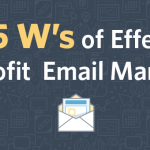The early months of the new year offer the perfect opportunity to reflect and set new organizational goals. Human capital is an important asset to help achieve these goals, so it’s essential to evaluate the culture and climate of your workforce: Are you able to support the growth of your organization? Have you acquired the right talent to help achieve your business goals? Creating a strategic hiring plan is critical to answering these questions.
Anticipate Your Needs Before They Happen
The first step to creating a hiring plan is assessing and evaluating your current workforce. Both the quality and quantity of your employees are factors that need to be considered.
- The quality of your workforce centers around current and future performance potential. This measurement helps to lay the groundwork for talent management strategies.
- The quantity of the workforce breaks down data that highlights the impact of new hires, employee turnovers, and internal promotions.
You can gain insight on your current employees’ skills, abilities, and knowledge in numerous ways. One of these methods involves going through old resumes to highlight certifications or training that the employee isn’t using in their role. Have a conversation with that employee to understand their passions, goals, and hobbies outside of work to see what they can leverage on-the-job.
When talking with employees, it is important to have transparent conversations about their goals and aspirations at the company — not just their personal passions. Productivity in an organization improves when individual goals are properly aligned with the company mission.
Revisiting recent performance reviews are also a great method for finding employees that are excelling or are willing to take on more responsibilities. When it comes to reviews, consistent conversations bring about more productive changes than the typical annual review. Employees prefer consistent feedback, and these continual conversations are great ways to promote transparency in the workforce.
Some questions to consider:
- What is our turnover rate in a given year?
- What plans do we have in place for handling turnover?
- Do we have succession plans in place for promotions?
Think about these factors ahead of time so you aren’t taken by surprise or rushing to fill critical gaps later.
Mind the Gaps
After taking the time to assess your workforce, you should have a clear idea of what your organization will look like throughout the year. Now is the time to focus on the yearly goals set for your business, which will help steer your talent management strategy and hiring plan.
Key questions for your HR department when crafting a hiring plan include:
- Have we hired the right talent to meet our goals?
- Are there any gaps in our workforce’s skills and abilities?
ClearCompany can help highlight these gaps with the Applicant Tracking System, which helps to source and screen applicants, and find ways to reach top talent. By centralizing and organizing notes on candidates, interview schedules, and referrals, you can get a clear picture of the entire hiring pipeline in a way that can be tracked and analyzed to help your decision making.
It is important to remember with talent acquisition that quality is more important than quantity. Find the areas you can improve your strategy to create a better experience for candidates, so that you are receiving more valuable applicants, rather than simply receiving as many applicants as possible.
Some ways to fine-tune your hiring strategy include:
- Rework your job descriptions. Make sure that your job descriptions are written in a way that clearly defines the role and attracts the candidates who are qualified for the job. Glassdoor talks about the importance behind providing accurate and clearly stated roles and responsibilities in a job description. Take the time to ensure there is no ambiguity around the role. Doing so helps attract higher quality, more qualified talent.
- Expand and assess your recruiting sources. Today, more than 73% of people aged 18-34 have discovered a job through social media channels. Using social media to recruit new candidates should be an avenue your organization explores in 2020. Surprisingly, most companies are overspending, setting large budgets for job boards and staffing agencies, even though these methods only yield around 35% of total applicants for any given job. Take the time to assess your recruitment spending, and find ways to better budget your spending.
- Promote employee referrals. Employee referrals improve the quality of hire, and also help to cut back the time it takes to hire and onboard an employee. Your current employees understand the culture and vision of your organization best, therefore they might offer great insights into who would be a good addition to your team.
Acquisition is about attracting the right applicants to your open positions. After ensuring that your talent acquisition strategy is effective and efficient, take time to assess what happens after they’re hired.
Onboarding is a critical component of talent management and hiring — a positive onboarding experience increases the likelihood an employee will stay with you for more than 3 years by 58%. Yet, nearly 88% of all companies fail to onboard well.
Appeal to Top Talent
Your acquisition and hiring strategies are only part of the solution. You need to also make sure that the candidates you extended offers to will choose to work with you as well. Consider the following strategies:
- Assess your incentives, perks, and employee benefit programs. Is what you’re offering meeting the expectations of your ideal candidates? Are your employee perks enough to attract and retain top talent? If not, it may be difficult to attract the candidates you hope to receive.
- Implementing professional development plans. Roughly 70% of the workforce says that they would leave their current job to work for a place that highlights professional development. Offering your employees opportunities to advance their professional skills and progress in their career is a great way to entice top talent.
- Reassess and improve your company culture. A strong, positive work environment attracts highly qualified employees, but it also assists in retaining employees. 46% of employees cite company culture as a strong reason to apply to an organization. Additionally, 15% of employees have turned down a job offer due to the company culture. Work with your current staff and the leadership of your organization to ensure you are implementing a strong, positive culture at all levels of your company.
As we dive into the new year, take the time to assess your hiring and onboarding strategies, and find ways you can improve your processes. These changes affect the long-term success of your company, and it is important to remember that your hiring planning is a continual process. Always make sure to re-evaluate your strategy, tweaking it to best fit your needs.
Originally published here.
Business & Finance Articles on Business 2 Community
(75)
Report Post





